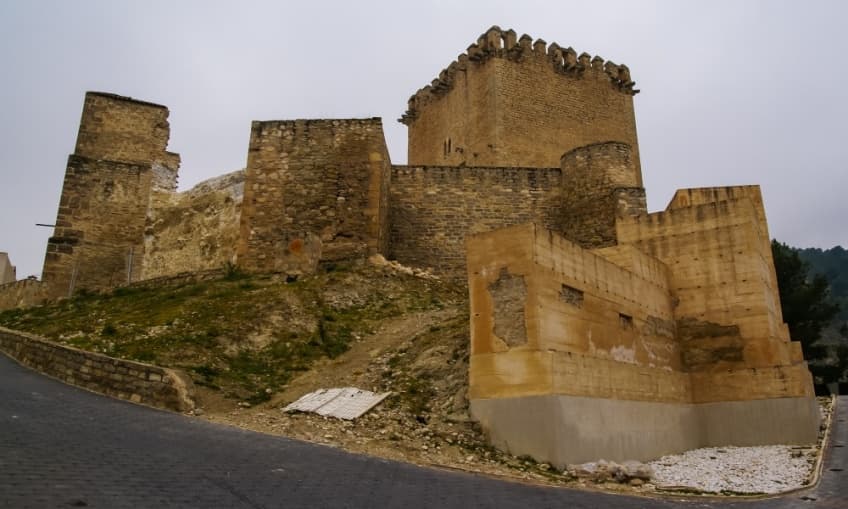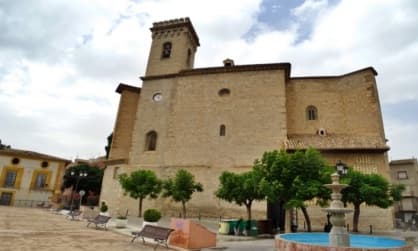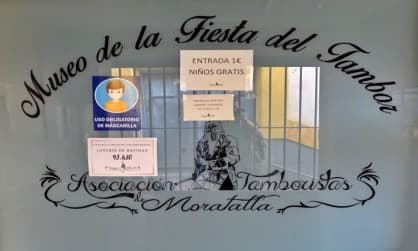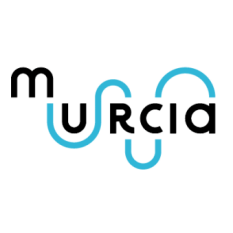
What to see in Moratalla
Castle Fortress

This is an imposing and beautiful building dating from the 9th century, considered a jewel of medieval architecture. A defensive enclosure was built that was an iconic place due to its border location. However, it was not until the Islamic period when its space was configured to defend the population born in the shelter of its walls.
In 1242, the Major Commander of Castile conquered these lands. Under Christian power from 1245, the castle was the seat of the Commandery of Santiago.
In 1242, the Major Commander of Castile conquered these lands. Under Christian power from 1245, the castle was the seat of the Commandery of Santiago.
It has five towers. The main one is the Homage Tower, which is reached through a striking spiral staircase. In addition, it has three floors and boasts a visible pinnacle with gray roofs.
Church of Our Lady of the Assumption

Like many churches in Moratalla, this was built around the 15th century and is inscribed under a Renaissance aesthetic. It is a Catholic temple built on the grounds of two previous churches: the first from the 13th century and the second from the 14th and 15th centuries. There was a Gothic temple consecrated to Saint Mary, of which today a large window is preserved on one of the facades of the temple.
The building consists of a wide interior of naves separated by huge plain columns, without carvings and ornaments, from the year 1521.
The building consists of a wide interior of naves separated by huge plain columns, without carvings and ornaments, from the year 1521.
Drum Museum

This is a cultural space inaugurated by the Association of Drummers of Moratalla, where we witness the knowledge of a tradition of drummers and the history of drums, their crafts, and much information about the culture of the drum.
It is a place where everything related to the Moratalla drum festival is set up, which is declared of regional tourist interest.
It is a place where everything related to the Moratalla drum festival is set up, which is declared of regional tourist interest.
Franciscan Convent of Saint Sebastian

This is a building rebuilt in the 16th century based on the old hermitage of Saint Sebastian, from the 15th century. Its primitive appearance was slightly modified in the 18th century, preserving what we see today: the library building and the Plaza de Abastos.
Its aesthetics make it part of the late Murcian Baroque period, with colonial influence, along with some geometric and vegetal representations in red, black, and gray Jasper. It has niches that show the images of the clouds of Saint Sebastian and Saint Francis, made by the sculptor Domingo Blázquez.
Its aesthetics make it part of the late Murcian Baroque period, with colonial influence, along with some geometric and vegetal representations in red, black, and gray Jasper. It has niches that show the images of the clouds of Saint Sebastian and Saint Francis, made by the sculptor Domingo Blázquez.
Cave Art Interpretation Centre

Located in a building built in the 17th century with a palpable influence of the popular Baroque, this is a space for research and interpretation of cave art, with a capital historical significance and a necessary visit for anyone who wants to know in depth the prehistoric cave art of Murcia.
The entrance of the centre welcomes us with a projection. Then, on the top floor, the museum program takes place, where we find an archive of prehistoric cave art and different explanatory materials of its declaration process as a World Heritage Site, carried out by UNESCO.
The entrance of the centre welcomes us with a projection. Then, on the top floor, the museum program takes place, where we find an archive of prehistoric cave art and different explanatory materials of its declaration process as a World Heritage Site, carried out by UNESCO.
Town Hall

This represents the history of the municipality and the achievement of facilitating knowledge about the local culture to its inhabitants and visitors.
Initially, it was located in a building heir to a 19th-century construction, owned by Don Pedro Ramón López Sahajosa, and represented the heritage of the typical aesthetics of the houses of that time: large gardens, balconies on the four facades, and marble stairs.
Initially, it was located in a building heir to a 19th-century construction, owned by Don Pedro Ramón López Sahajosa, and represented the heritage of the typical aesthetics of the houses of that time: large gardens, balconies on the four facades, and marble stairs.
Cañaica del Calar I, II, III and IV
These are a series of cave art pictograms that represent evidence of Neolithic Prehistoric Parietal Art. They were discovered in 1967 in a ravine in the Paraje de Cañaica de Andrés and were later studied by professors Walter and Carbonell.
In these pictograms, nature and, above all, fauna take a special role. Thus, in those of Cañaica del Calar, we find, for the most part, swallows, figures of quadrupeds, caprids, and deer.
In these pictograms, nature and, above all, fauna take a special role. Thus, in those of Cañaica del Calar, we find, for the most part, swallows, figures of quadrupeds, caprids, and deer.
Fuente del Sabuco I and II

These are series of pictorial representations of cave art revealed in Shelters I and II, the sites of which are of great importance for the culture and research of Levantine cave art.
It has human representations in a parade attitude, showing various animals and elements that form a setting of particular tourist and figurative interest, where the materials used and the importance of their interpretation for the culture stand out.
It has human representations in a parade attitude, showing various animals and elements that form a setting of particular tourist and figurative interest, where the materials used and the importance of their interpretation for the culture stand out.
House of Christ Hermitage

This dates from the 17th century and was originally part of the Mercedario Convent that was disentailed in the 19th century, as shown by part of its cloister which is attached to it.
This enclosure boasts a beautiful popular baroque style and has been restored several times, resulting in the extension of its only nave. Thus, thanks to its architectural style, a balcony opens over the semi-circular entrance that provides natural light to the choir, which contrasts especially with the pastel colours of the interior of the enclosure.
This enclosure boasts a beautiful popular baroque style and has been restored several times, resulting in the extension of its only nave. Thus, thanks to its architectural style, a balcony opens over the semi-circular entrance that provides natural light to the choir, which contrasts especially with the pastel colours of the interior of the enclosure.
Saint Anne Hermitage

This is part of a tradition of hermitages, of clear Baroque inspiration, built around the 17th century. It is a sacred place and scene of faith, which houses the pictorial representations of the Virgin Saint Anne and the girl Virgin Mary, as well as a 19th-century parish cross.
Due to its advanced deterioration, it was closed in 1988. At the end of 1994, restoration works were restarted, following the directives of the Second Vatican Council. The result is evidenced by the presidio of the altar itself in the centre of the nave so that the parishioners are placed around it.
Due to its advanced deterioration, it was closed in 1988. At the end of 1994, restoration works were restarted, following the directives of the Second Vatican Council. The result is evidenced by the presidio of the altar itself in the centre of the nave so that the parishioners are placed around it.
Trieta Theatre

Built at the beginning of the 20th century on the grounds of the old English Garden, this theatre is a worthy example of the civil architecture that we currently find in the municipality.
Though its construction was not completed at the time, the theatre was premiered by actress Estrella Gil, in 1916, during the San Miguel Festival.
For a time, the building was named after her.
Though its construction was not completed at the time, the theatre was premiered by actress Estrella Gil, in 1916, during the San Miguel Festival.
For a time, the building was named after her.
It is currently the scene of multiple theatrical performances, film screenings, and cultural performances, which include the Holy Week festivities.
Hellin Bridge

Recognized for its Roman origin, unique in its style, its construction dates from the year 1548. It was built on the Alharabe river, on the old communication path between Moratalla and Hellin.
Likewise, it has an extension of 25 meters and was recently restored. At present, it continues to function as a route of tourist interest and as a passage for farmers who come from the Huerta area.
Likewise, it has an extension of 25 meters and was recently restored. At present, it continues to function as a route of tourist interest and as a passage for farmers who come from the Huerta area.
Virgin of La Rogativa Sanctuary
This is a temple erected in the 16th century, inspired by a mixture of Renaissance and Baroque styles. Motivated by a fire that destroyed part of its wooden infrastructure, it was renovated in the 17th century. For its reconstruction, they used commonly used materials such as wood, brick, and stone.
It is a pilgrimage temple whose octagonal plan, with a single nave, offers spaces to shelter from the defencelessness of the climate.
It is a pilgrimage temple whose octagonal plan, with a single nave, offers spaces to shelter from the defencelessness of the climate.
What to see in the Noroeste region













